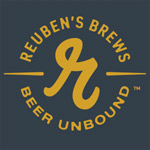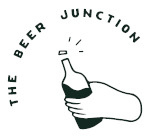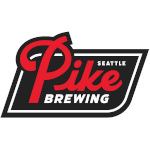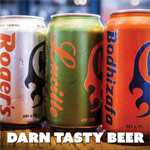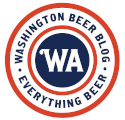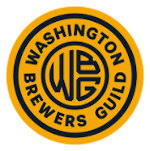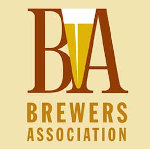Random alcohol tests at work can create stress, especially if you enjoy an occasional drink or had a night out recently. The implementation of work-based alcohol tests by employers serves to maintain workplace safety within industries that require high accuracy and alertness from their employees. You cannot predict test times at work but understanding the alcohol internal processing system can aid your decision-making process.
Those who enjoy beer consumption need to exercise responsible alcohol consumption as knowledge of these tests demonstrates their importance. Getting pleasure from drinking beer contains great importance yet you require proper timing since drinking at breweries or food pairing evenings or just enjoying beer on your own counts as essential time factors.
The article details alcohol test mechanisms and reveals retention times of beer-related beverages as well as teaches effective methods for managing workplace screening processes.
Why Employers Use Random Alcohol Tests
Workplace alcohol testing creates three major benefits: it decreases workplace injuries and enhances operational performance while supporting companies in policy adherence. Organizations operating in transportation along with construction and healthcare and manufacturing sectors need rigorous testing programs to protect against serious safety hazards that alcohol impairment triggers. Even if your job doesn’t involve heavy machinery or direct safety concerns, employers may still test to maintain a professional environment and protect the company from liability issues.
Random testing provides success because employees cannot anticipate or plan ahead of time against them. The possibility of unannounced testing causes workers to refrain from heavy drinking or reporting to their duties under intoxication. A testing appointment can take place during standard working hours, with immediate checks right after accidents indicate alcohol consumption.
How Alcohol Tests Work
Different types of alcohol tests measure either current impairment or past alcohol use. The type of test used affects the detection window and accuracy:
1. Breath Tests
Breath tests measure blood alcohol concentration (BAC) by analyzing the alcohol content in exhaled breath. They provide immediate results and detect alcohol consumed within the last 12 to 24 hours.
2. Urine Tests
Urine tests detect ethyl glucuronide (EtG), a byproduct of alcohol metabolism. While alcohol itself clears from urine within 12 hours, EtG can be detected for up to 80 hours, especially after heavy drinking.
3. Blood Tests
Blood tests measure the amount of alcohol currently in your bloodstream. They offer the most accurate snapshot of current impairment but have a shorter detection window, typically up to 24 hours after drinking.
4. Saliva Tests
Saliva tests measure recent alcohol use, usually within the past 24 hours. They are less invasive than blood tests, but not as widely used in workplace settings.
5. Hair Tests
Hair tests detect alcohol use over a long period, up to 90 days. They measure alcohol metabolites embedded in hair strands, revealing patterns of alcohol consumption rather than immediate impairment.
How Long Does Alcohol Stay in Your System?
Alcohol leaves the body at a steady rate, but several factors influence how long it remains detectable:
- Amount Consumed – More alcohol takes longer to process.
- Metabolism – People with faster metabolisms eliminate alcohol more quickly.
- Body Weight and Composition – Higher body fat levels slow alcohol elimination.
- Hydration Levels – Dehydration slows the body’s ability to flush out alcohol.
- Food Intake – Eating before or during drinking slows alcohol absorption, but it doesn’t reduce how long it stays in your system.
On average, the body metabolizes one standard drink (about 14 grams of alcohol) per hour. After a heavy drinking session, alcohol can remain in the bloodstream for up to 12 hours, in urine for up to 80 hours, and in hair for several months.
How to Prepare for a Random Alcohol Test
Since random tests can happen without warning, it’s important to stay prepared. Here’s how to reduce your chances of a positive result and protect your job:
1. Limit Drinking, Especially on Work Nights
Drinking heavily the night before work increases the chance of a positive test the next day. Even if you don’t feel impaired, alcohol metabolites can linger in your system. Stick to moderate drinking and avoid binge sessions if your employer conducts regular tests.
2. Stay Hydrated
Water consumption at adequate levels enables the human body to remove alcohol compounds and toxic waste products from the system more rapidly. Drinking water does not reduce blood alcohol content right away, yet it supports the urinary system in breaking down EtG. The careful choice of consuming beer responsibly alongside fluid maintenance provides essential health care support, alongside responsible behavior for beer lovers.
3. Avoid “Alcohol-Free” Beverages
Some popular types of alcohol alternatives, like alcohol-free beers, still contain small amounts of alcohol, usually less than 0.5% ABV. While this seems insignificant, frequent consumption of these beverages can lead to detectable EtG levels in urine tests. If you have an upcoming test or work in a job with regular testing, avoid alcohol-free beers to prevent accidental positives.
4. Use Caution with Mouthwash and Medications
Mouthwash products with various over-the-counter medications usually contain alcohol as an ingredient. The consumption of these particular substances fails to intoxicate but may both elevate EtG measurements in urine tests and produce incorrect positive readings from breath tests.
The concern stands highest for those who might undergo testing at work. The choice of alcohol-free mouthwash along with label examination of your medications will eliminate unwanted complications while maintaining access to your preferred alcoholic beverages.
5. Get Enough Rest
Lack of sleep slows down the body’s ability to metabolize alcohol. Proper rest gives your liver the time it needs to process alcohol and clear metabolites from your system.
6. Use Synthetic Urine for Reliable Test Results
When it comes to passing a test, having a reliable solution matters. Quick Fix is a high-quality synthetic urine designed to mimic real urine’s chemical composition, making it a trusted choice for drug tests. Its balanced pH, creatinine levels, and specific gravity closely resemble natural urine, helping it pass most standard drug screenings. While alcohol tests that measure EtG levels are more advanced, Quick Fix remains a go-to solution for ensuring consistent and accurate results in various testing situations.
What to Do If You Test Positive
If you test positive, stay calm and avoid making excuses. Depending on your employer’s policies, a single positive result may not result in termination, but it could lead to mandatory counseling, probation, or increased monitoring.
- Be Honest – If you make a mistake, admitting it may work in your favor.
- Know Your Rights – Review your company’s alcohol testing policy to understand the consequences and your options for appealing the result.
- Seek Help If Needed – If alcohol use has become a problem, consider seeking professional help or using employee assistance programs (EAP) offered by your employer.
Long-Term Strategies to Avoid Positive Tests
The combination of disciplined alcohol habits and responsible drinking practices allows employees to decrease their odds of producing positive test results during random screenings. This strategy also promotes their general health. Male and female guests need to manage their alcohol intake in all drinking settings from tasting events to craft beer trials. The key to remaining in control involves both hydration and drink spacing as well as alcohol product abstention before work shifts. A healthy lifestyle allows your body to metabolize alcoholic substances effectively while supporting responsible alcohol consumption which reduces possible work-related issues.
Enjoyment and Workplace Responsibility
Workplace alcohol tests require both sensible actions coupled with alcohol use moderation. The comprehension of alcohol metabolism alongside testing principles enables people to have their beverages without unexpected results. Understanding alcohol metabolism, selecting good choices and responsible drinking habits will enable you to experience great beer or any type of alcohol while safeguarding your professional standing.










